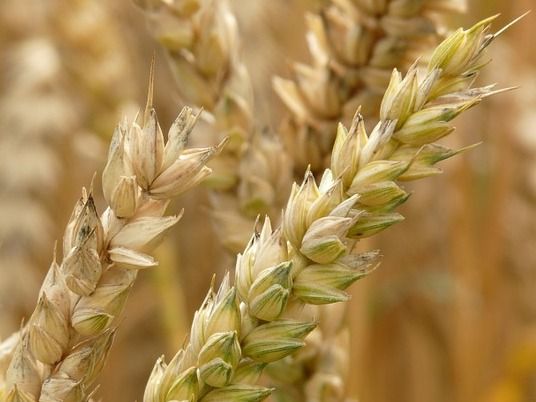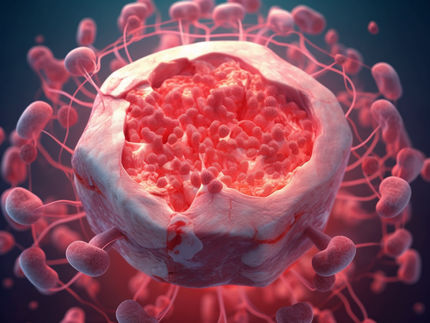Communication between Wheat Genes Contributes to Increasing Crop Productivity
Advertisement
Heterosis describes the situation where the performance of a hybrid progeny exceeds that of its parents. A research team at the Leibniz Institute of Plant Genetics and Crop Plant Research (IPK) has demonstrated for wheat that the phenomenon is primarily dependent on interactions between genes.

Hans/ Pixabay
The fight against global hunger is intensifying: the rate of increase in the volume of cereal grain produced is not keeping pace with that of the world's population. As explained by Prof. Jochen Reif, the head of the Division of Breeding Research at the IPK in Gatersleben "wheat contributes about a fifth of the total calories for the world’s population and thus represents one of our most important crops. As the size of the human population increases, more productive wheat varieties will need to be bred, but wheat yield increases are currently stagnating". The breeding of hybrids represents a promising approach to increasing crop productivity. Prof. Reif underlines that "the hybrid offspring of parents which complement one another genetically can, as a result of heterosis, contribute as much as an extra one tonne per hectare of grain, which represents about ten years’ worth of breeding progress”.
Dr. Yong Jiang, a scientist engaged in the Quantitative Genetics Working Group at the IPK maintains that "if we understand the mechanism of heterosis, the phenomenon will become more readily exploitable for hybrid breeding than ever before". To address this issue, an IPK team of mathematicians, geneticists and agricultural scientists have combined modern quantitative genetics and genome research methodologies with a view to elucidating the mechanisms underlying heterosis. "Up to now”, states Dr. Jiang, “comprehensive quantitative genetic analysis has only possible for certain specific plant populations. Only by generalizing existing evaluation tools has it now become possible to include gene interactions into our investigation into heterosis in wheat. This has proven to be the key to success, because in this important crop, cross-talk between various genes appears to be crucial for heterosis. The methodology we have developed provides a firm basis for understanding heterosis in other important crops as well".
"The Nordharz / Börde region around the IPK is the Silicon Valley of plant breeding. We are therefore very pleased that our interdisciplinary and intercultural team has succeeded in making a contribution towards improving food security, one of the most pressing of global challenges" states Prof. Reif. The particular relevance of this study to agricultural research in a time of climate change is underlined by the publication of the paper in the respected scientific journal Nature Genetics.
Global temperatures are expected to increase from 1 to 6°C by 2100, with serious consequences for agriculture and thereby the food security of the growing human world population. From this perspective, pearl millet (Pennisetum glaucum (L.) R. Br., syn. Cenchrus americanus (L.) Morrone) is an interesting crop producing reliable grain in regions of drough, heat and low soil fertility where rice, maize and wheat are likely to fail. The high nutritious millet grains are a staple food for people living in arid and semi-arid regions of Asia and Africa.
“Despite the clear importance of pearl millet in agriculture of some regions, its production and productivity are very low and therefore of no importance in modern agriculture,” explains Dr. Yusheng Zhao, scientist in the research group Quatitative Genetics of the IPK in Gatersleben. “To enable the exploitation of its qualities in the near future, we sequenced the genome of a pearl millet reference genotype and analyzed the resequenced genomes of almost 1,000 pearl millet lines to get insights into the population structure, genetic diversity and domestication and additionally to develop genomics tools for the improvement of this staple crop.”
This the results of this scientific partnership between scientists from America, Asia and Europe provide the genome sequence of a pearl millet reference genotype and the resequenving data of almost 1,000 peral millet lines. They enable a better understanding of the genetic basis of its agronomically important traits like the exceptional drogh and heat tolerance and the genetic improvement of not only peral millet but also other cereal crops with modern breeding methods.
“Aditionally, with the methods of Quantitative Genetics we identified pearl millet lines that have been not used so far for hybrid breeding but can exhibit high hybrid performance and therefore be crucial for increasing the efficiency of hybrid breeding programs,” said Dr. Jochen C. Reif, Professor and head of the IPK department Breeding Research in Gatersleben. “The acceptance of our research work by the publication of its results in the reknowned research magazine Nature Biotechnology also exemplifies the importance of bringing international knowledge and infrastructures together in scientific cooperations and of integrating promising young scientist from other countries into the teams of our German research institutions.”
Publication:
Yong Jiang, Renate H Schmidt, Yusheng Zhao, Jochen C Reif. (2017): A quantitative genetic framework highlights the role of epistatic effects for grain yield heterosis in bread wheat. Nature Genetics. doi:10.1038/ng.3974


























































